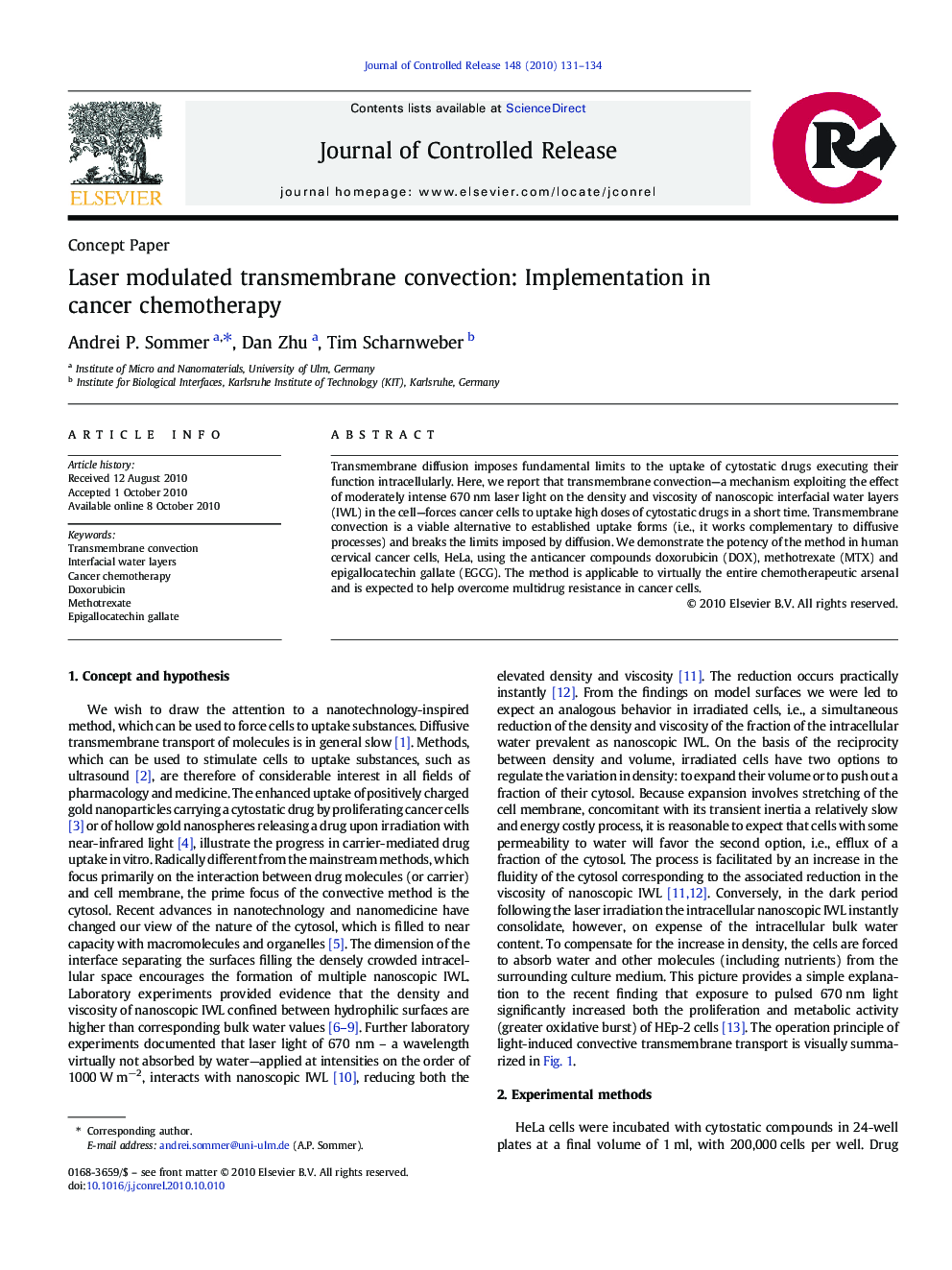| Article ID | Journal | Published Year | Pages | File Type |
|---|---|---|---|---|
| 1425784 | Journal of Controlled Release | 2010 | 4 Pages |
Transmembrane diffusion imposes fundamental limits to the uptake of cytostatic drugs executing their function intracellularly. Here, we report that transmembrane convection—a mechanism exploiting the effect of moderately intense 670 nm laser light on the density and viscosity of nanoscopic interfacial water layers (IWL) in the cell—forces cancer cells to uptake high doses of cytostatic drugs in a short time. Transmembrane convection is a viable alternative to established uptake forms (i.e., it works complementary to diffusive processes) and breaks the limits imposed by diffusion. We demonstrate the potency of the method in human cervical cancer cells, HeLa, using the anticancer compounds doxorubicin (DOX), methotrexate (MTX) and epigallocatechin gallate (EGCG). The method is applicable to virtually the entire chemotherapeutic arsenal and is expected to help overcome multidrug resistance in cancer cells.
Graphical abstractFigure optionsDownload full-size imageDownload as PowerPoint slide
